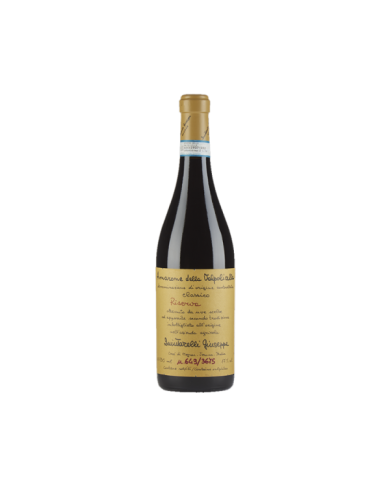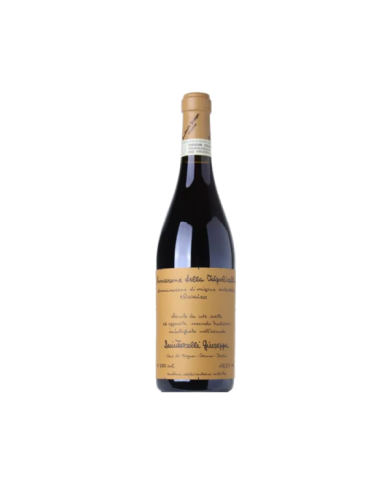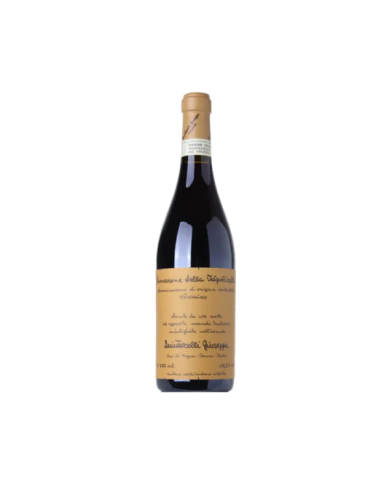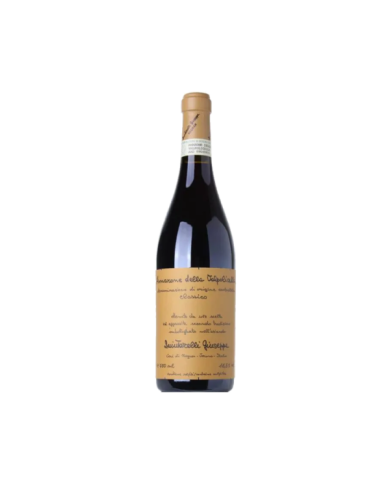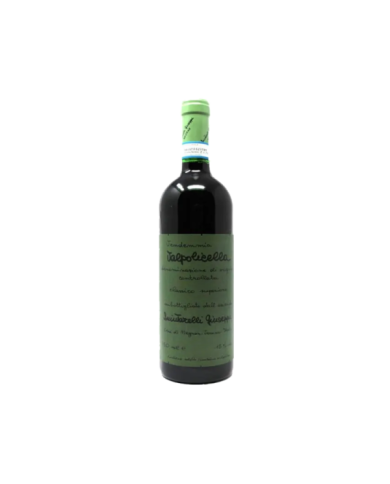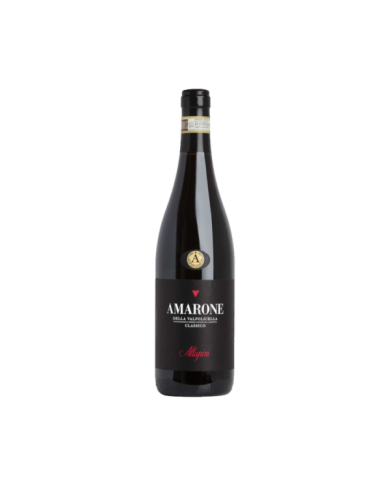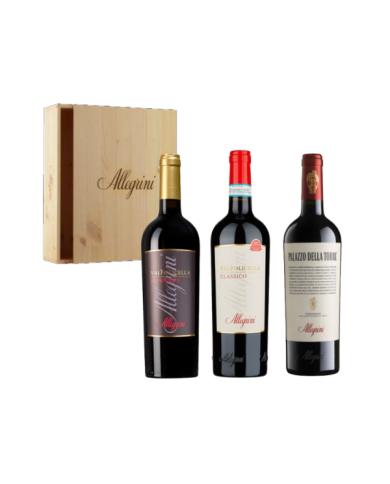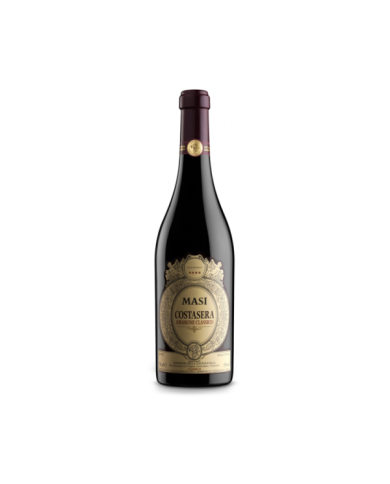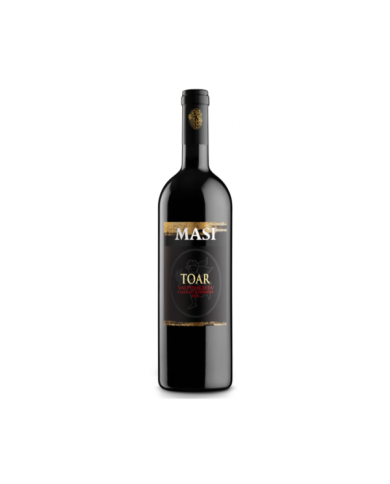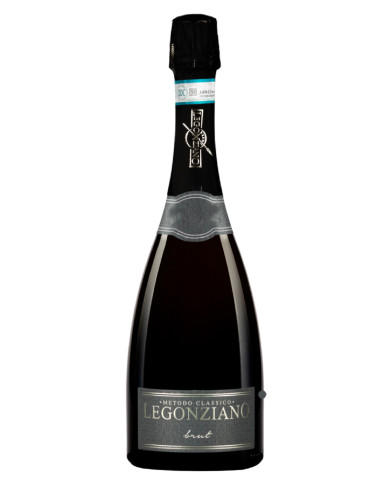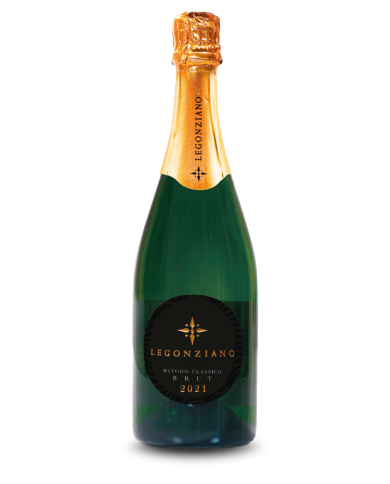This Amarone Classico della Valpolicella Riserva is characterized by a deep pomegranate red color. The nose opens with an intense bouquet, with elegant hints of almond, enriched by pleasant aromas of cherry. On the palate it is powerful and complex, with a pleasantly spicy aftertaste. Perfect to accompany roasts and grilled red meats, it is ideal in combination with game and aged cheeses.
Allegrini , thanks to the knowledge gained through years of experimentation and research, has perfected a style of Amarone capable of maintaining and enhancing the integrity of the fruit, thanks to a mix of tradition and innovation that has its roots in 1854 . Amarone is the result of all the wisdom of the Allegrini family, a true classic of the denomination, a red that sums up tradition, territory and peasant wisdom . Corvina, Corvinone, Rondinella and Oseleta are left to wither at least until December, checking their health on a daily basis: the result is history, passion and continuous growth.
- _x0001_
- Valpolicella Classico DOC 2019 _x0001_
- Valpolicella Superiore DOC 2018 _x0001_
- Palazzo della Torre Veronese IGT 2017
Beautiful painted wooden box consisting of two bottles
- _x0001_
- Amarone della Valpolicella Classico DOCG 2016 La Grola Veronese IGT 2017
Proud, majestic, complex, exuberant, it represents a special selection of Costasera, the gentle giant of Masi . It is a point of reference for the Amaroni category, which together with Barolo and Brunello represents the aristocracy of Italian reds. Here the authoritative expertise of Masi nell'Appassimento is interpreted with a long over-ripening of the grapes on bamboo racks and at least three years of aging in noble woods. The wise use of the native varieties of Valpolicella Classica Corvina, Rondinella and Molinara is enriched by the presence of the original Oseleta, rediscovered by Masi .
Proud, majestic, complex, exuberant: he is the gentle giant of Masi . It is a point of reference for the Amaroni category, which together with Barolo and Brunello represents the aristocracy of Italian reds. It is the result of the authoritative expertise of Masi in the Appassimento technique: the native varieties of Valpolicella Classica Corvina, Rondinella and Molinara rest on bamboo racks in the winter months, concentrating the aromas.
Appellation Valpolicella Classico: A Journey into the Heart of Italian Wines
The Valpolicella Classico Denomination represents excellence in the Italian wine scene. Located in the Veneto region of northeastern Italy, Valpolicella Classico is known for its high-quality wines, rich tradition and unique terroir. In this article, we'll explore the history, grape varieties, production process, and distinctive characteristics that make the Valpolicella Classico appellation so popular with wine lovers.
Introduction to the Valpolicella Classico Denomination
The Valpolicella Classico Denomination is one of the most prestigious sub-areas of Valpolicella, famous for the production of high quality wines. This denomination includes the oldest and most traditional hills of the region, which give the wines unique characteristics.
History and territory of Valpolicella Classico
The history of Valpolicella Classico has its roots in antiquity. The region has witnessed grape growing and wine production since Roman times. The Valpolicella Classico area is characterized by gentle hills and a soil composed of calcareous marl, gravel and clay. These geographical conditions give the wines a particular elegance and complexity.
Main grape varieties of Valpolicella Classico
The main grape varieties used in the production of Valpolicella Classico wines are Corvina Veronese, Corvinone and Rondinella. Corvina Veronese is the dominant vine and helps to give the wines structure, elegance and complex aromas. Corvinone is a vine similar to Corvina, but with a higher concentration of sugars. Rondinella, on the other hand, gives color and freshness to the wines.
Production process of Valpolicella Classico wines
The production of Valpolicella Classico wines follows a rigorous process that begins with the grape harvest, generally between September and October. After harvesting, the grapes are carefully selected to ensure the best quality.
The grapes are then gently pressed to extract the must, which is fermented at controlled temperatures. During fermentation, the must remains in contact with the skins for a specific period of time, allowing the transfer of aromas, colors and tannins.
Types of Valpolicella Classico wines
The Valpolicella Classico Denomination includes different types of wines, each with its own unique characteristics. Among the best known we find:
- Valpolicella Classico : a young and fruity red wine, with a fresh and lively taste.
- Valpolicella Classico Superiore: a more structured wine, obtained from selected grapes and a longer aging period.
- Valpolicella Classico Ripasso: a wine obtained from the fermentation of the base wine on the skins of Amarone, which gives greater structure and complexity.
Organoleptic characteristics of Valpolicella Classico wines
Valpolicella Classico wines are characterized by a wide range of aromas and flavours. They have notes of fresh red fruit, such as cherries and strawberries, with hints of spices and flowers. On the palate, they are balanced, with a pleasant acidity and soft tannins.
Culinary pairings with Valpolicella Classico wines
Valpolicella Classico wines lend themselves to versatile culinary combinations. They go well with light first courses, white meats, soft cheeses and cured meats. Valpolicella Classico Superiore and Valpolicella Classico Ripasso also go well with red meats, roasts and more mature cheeses.
Visit the Valpolicella Classico and its cellars
For wine lovers, a visit to the Valpolicella Classico cellars is an experience not to be missed. Numerous wineries offer guided tours, during which it is possible to get to know the wine production process closely, visit the vineyards and taste the fine Valpolicella Classico wines.
The Valpolicella Classico Denomination is a true jewel of the Italian wine scene. Its millenary history, the unique territory, the autochthonous vines and the high quality wines make this appellation particularly appreciated. If you are a wine lover, do not miss the opportunity to taste and discover the Valpolicella Classico wines, authentic ambassadors of Italian tradition and winemaking excellence.
FAQ (Frequently Asked Questions)
What is the origin of the Valpolicella Classico Denomination?
The Valpolicella Classico Denomination has ancient origins in the Veneto region of Italy. Its history dates back to Roman times.
What are the main grape varieties used in the production of Valpolicella Classico wines?
The main grape varieties used in the production of Valpolicella Classico wines are Corvina Veronese, Corvinone and Rondinella.
What are the best known types of Valpolicella Classico wines?
The best known types of Valpolicella Classico wines are Valpolicella Classico , Valpolicella Classico Superiore and Valpolicella Classico Ripasso.
What are the organoleptic characteristics of Valpolicella Classico wines?
Valpolicella Classico wines have notes of fresh red fruit, such as cherries and strawberries, with hints of spice. On the palate they are balanced, with a pleasant acidity and soft tannins.
What food pairings are recommended for Valpolicella Classico wines?
Valpolicella Classico wines go well with light first courses, white meats, soft cheeses and cured meats. The more structured versions are also suitable for red meats, roasts and more mature cheeses.
6. Is it possible to visit the Valpolicella Classico cellars?
Yes, many Valpolicella Classico wineries offer guided tours, during which it is possible to get to know the wine production process up close, visit the vineyards and taste the fine Valpolicella Classico wines.

